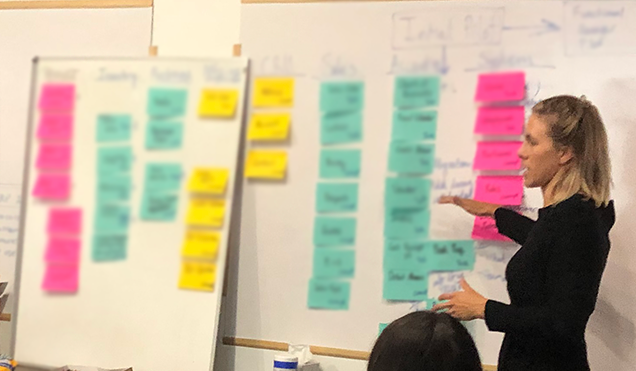
When I graduated college – armed with a bachelor’s degree in engineering – I was ready to put what I’d learned into application in the real world. The manufacturing environment I worked in performed repair and refurbishment activities on specialty parts used in a highly regulated industry. The company operated as a job shop / contract manufacturing environment with detailed component evaluations, re-engineering, parts procurement, and precision machining.
The first – and most important – lesson I learned was this: there’s a serious need for continuous improvement in industry, with a focus on process efficiencies, waste reduction and streamlined workflows.
Since I want to make a real impact wherever I work, that stark realization led me to grad school. I was motivated to learn and be armed with the skills needed to be a change agent and positively influence the operational performance of continuous improvement initiatives. After graduation, and commencing work on greater scoped continuous improvement initiatives, I quickly realized how impactful solid project management knowledge and skills are to accomplish said initiatives.
Project management is an important expertise for an organization. Solid project management practices ensure your business is completing work in a goal-oriented manner, thus reaching the end results of company initiatives in an efficient and effective process.
Project management expertise takes training and establishing practices for continuous improvement, as well as using your intuition. Projects are just as much about completing a deliverable as they are managing people. In addition to traditional project tools and techniques, some important project management skills include:
Projects are unique and specific with a defined start and end. A project is initiated to accomplish a defined goal within defined constraints like costs and time.
In my experience, projects are never perfect. The unavoidable unknown unknowns WILL happen. Changes WILL occur. The caliber of project management skills WILL define the impact of these unknowns and changes.
Avoiding and not properly managing the change needed during the project’s entire duration is a recipe for disaster. How we deal with the change needed for the continuous improvement of a business – and how we adapt our plans accordingly – is key to delivering projects successfully.
With strong project management skills, the change can be managed in a manner that is proactive and value-added to the goal of the project. The change should be managed and communicated in an organized, consistent, and transparent way.
There will ALWAYS be change – to personnel, to operations, to reports, to decision-making, etc. A project manager must build in project “bumper rails.”
For sustainability’s sake, take the time to:
Interested in implementing strong project management environment at your shop? Consider the following, my top project management recommendations for successful continuous improvement.
Teamwork and collaboration (especially among – and with – the company’s leadership) are critical for the beginning and duration of any project. Adequate pre-planning, a post-implementation plan, and on-going reinforcement is required for the sustainability of the project’s results. Every project is part of the larger continuous improvement plan.
If the executive knows why they want to change but doesn’t communicate that reason(s) to the team, then the exec is the point of failure. On the converse, if the exec isn’t supportive because the team hasn’t “sold” the project’s need, then the project is likewise doomed to fail.
Find out where your lack of buy-in lives.
What’s Next for Me?
My goal at xTuple is to build a portfolio of tools, resources and content to help our customers succeed when they undertake a new enterprise resource planning (ERP) project. I ALWAYS, conduct debriefs at the end of each project and apply “lessons learned” to the next project. I’m also studying for my Project Management Professional (PMP)® – the industry-recognized certification for project managers – to work on my own professional development and better help our customers achieve their business growth goals.
Some of the elements of effective project management that I want to share in the future (in no particular order of importance, some of these are huge topics all on their own) include:
My customer success team at xTuple is leading the charge in helping manage change with new webinar events for growing manufacturers and inventory-centric companies. Our first topic in the project management series: 5 Pain Points of Choosing (and Implementing) ERP.
Contact
xTuple
A CAI Software Company
24 Albion Rd, Suite 230
Lincoln, RI 02865
+1-757-461-3022
About
"xTuple" (verb) — to grow; to increase exponentially. Our mission is to help manufacturing and inventory-centric companies use management software and best practices to grow their business profitably.